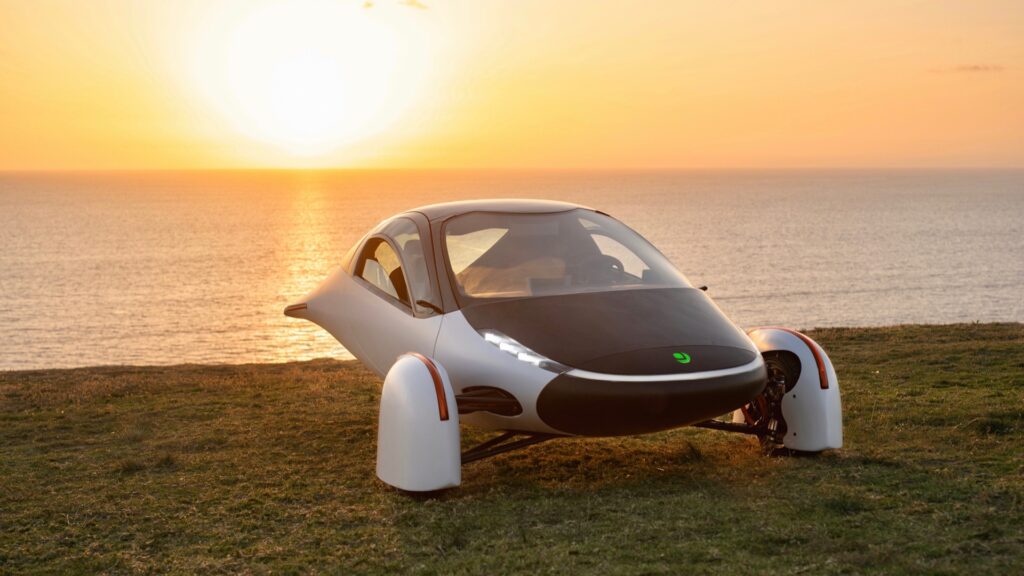- “Real-world validation testing” completed on inboard-motor setup
- Aptera switched to the layout, instead of in-wheel motors, for its future solar EV
- Per-mile energy consumption remains in line with previous layout
Aptera recently announced the completion of the first round of “real-world validation testing” for its solar-assisted three-wheeled electric vehicle, marking a significant milestone in the development process.
The testing, which focused on aerodynamics, took place at a proving ground in the Mojave Desert. This round of testing included dynamic assessments of handling, dive, lift, and high-speed stability with the original in-wheel motor configuration.
The latest round of tests introduced electric motors in the conventional inboard position, a shift that Aptera’s co-founder and co-CEO, Steve Fambro, highlighted as a key development in the vehicle’s evolution.

Aptera with Elaphe motors
“As we complete the first round of validation with our new in-board powertrain, we’re seeing strong results that align with our efficiency and performance targets,” Fambro said. “Our initial testing confirms that we continue to achieve Aptera’s signature ultra-efficiency, with energy consumption per mile remaining in line with our expectations.”
Aptera completed its first production-intent vehicle last October, combining the new inboard powertrain with other production-spec elements for validation testing. This included coast-down tests to measure aerodynamic drag and driveline energy losses.

Aptera production-intent vehicle
The decision to drop in-wheel motors, driven by cost considerations, marked a strategic shift for Aptera. Despite this change, the company remains committed to its goal of mass production, aiming to build a million vehicles by 2033.

